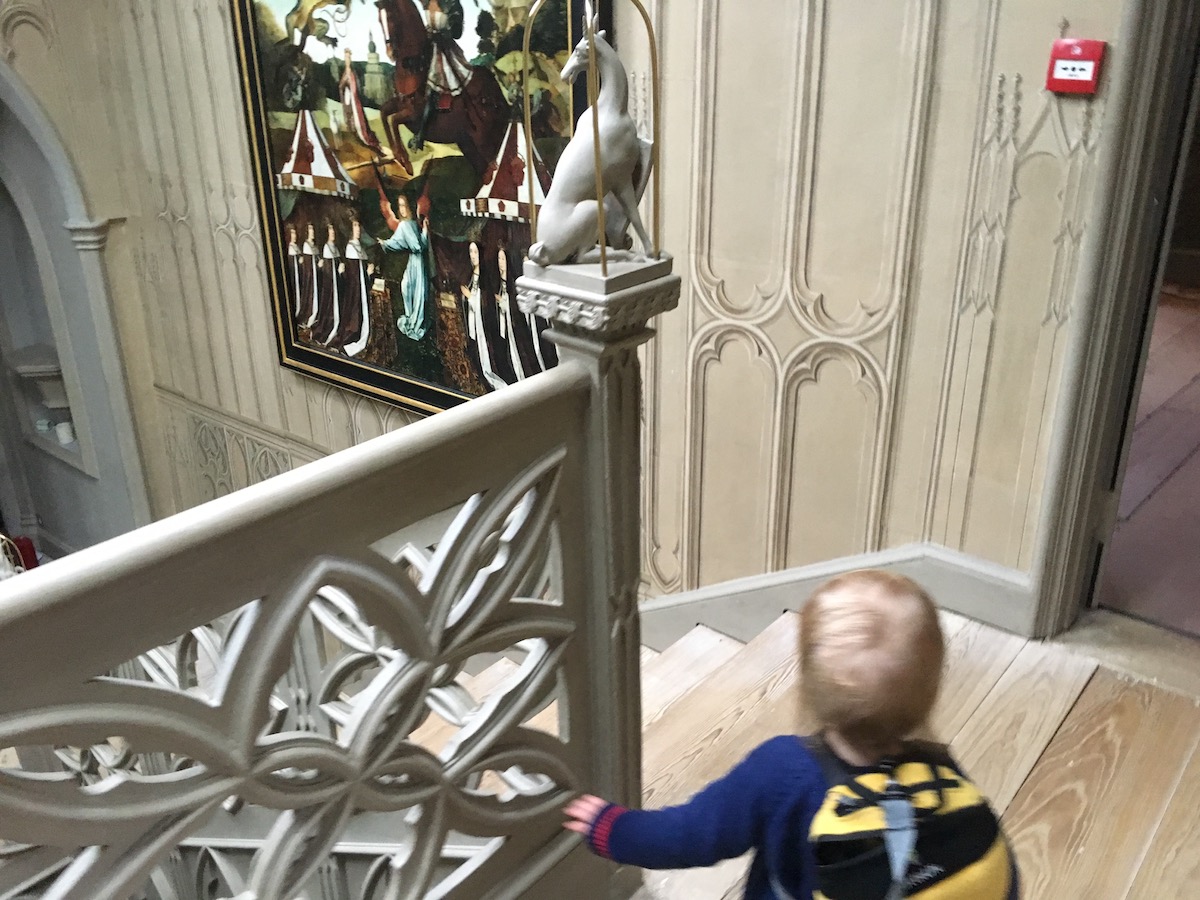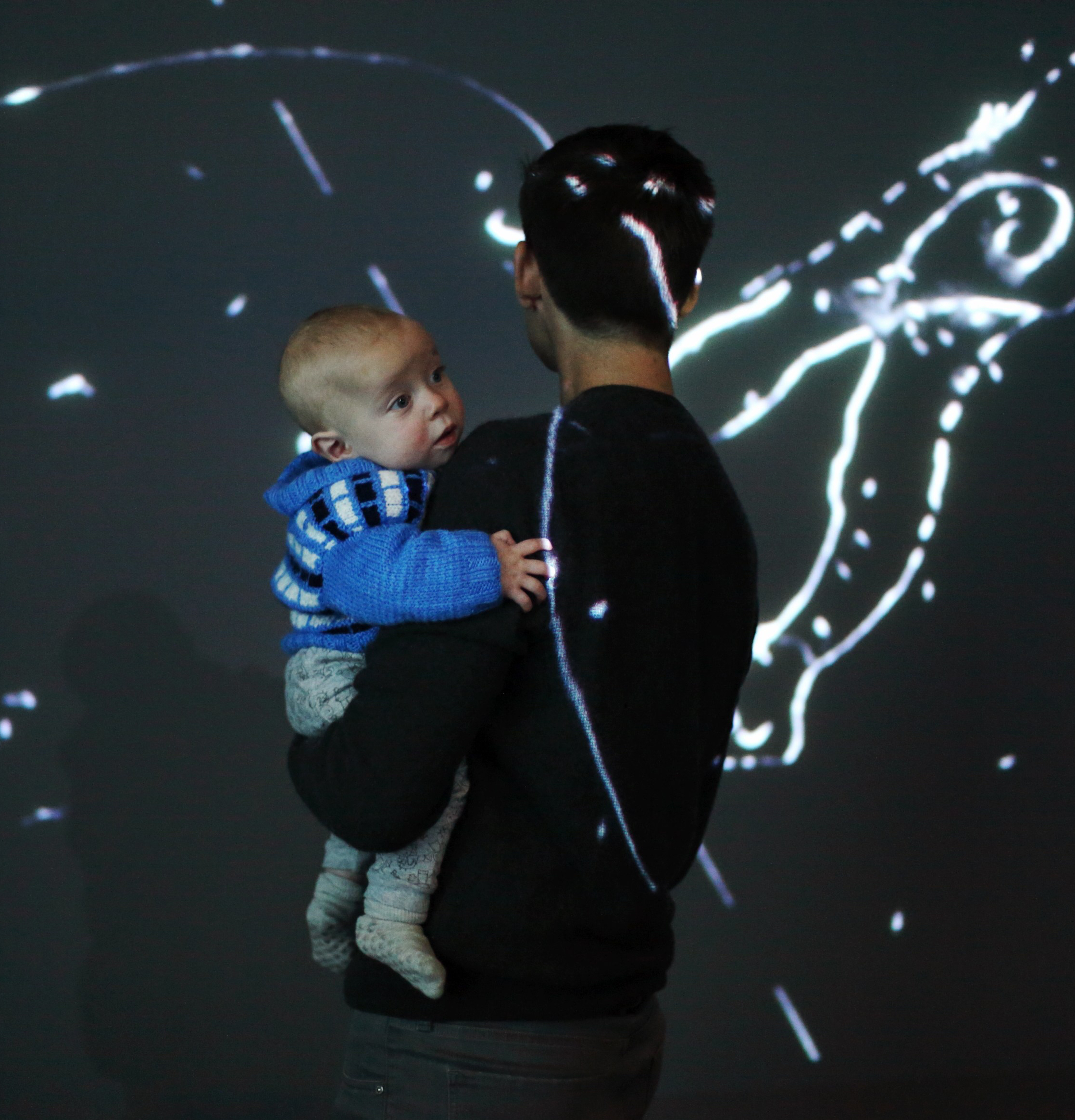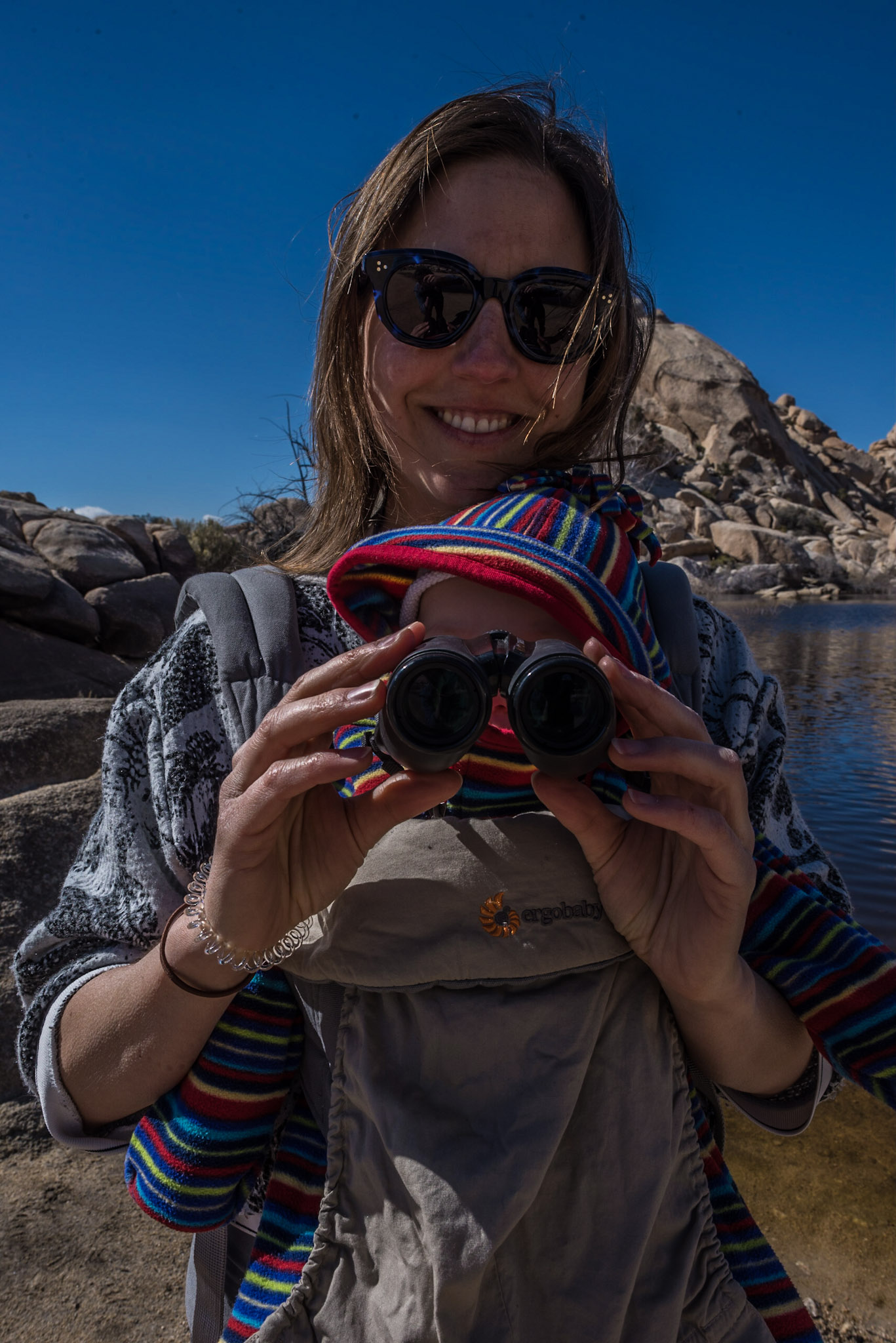As an arts journalist, the Edinburgh festivals are a high point of my working year. I’ve spent pretty much very August since 2007 up there, including 2016, when I was eight and a half months pregnant and mildly terrified that I would end up having the baby girl in Edinburgh rather than London. (It worked out fine: in the end she came 10 days late, by which time I’d been home for ages.)
I had my concerns about taking the baby girl to the Fringe in 2017, but as I was still breastfeeding, I didn’t have much choice in the matter. I was definitely going, which meant that she would be coming too. My partner and I decided to spend a stupidly large proportion of our festival income renting an entire flat (including a spare room for visiting grannies/babysitters) and come up as a family.
I haven’t come across many other journalists taking small children to the Edinburgh festivals, but there are lots of performers that do it. This post is for them (and indeed anyone working at the festivals) but it’s also for non-performers; ordinary punters considering whether to brave Edinburgh with a little one in tow. My message to you is… do it!
Things to do
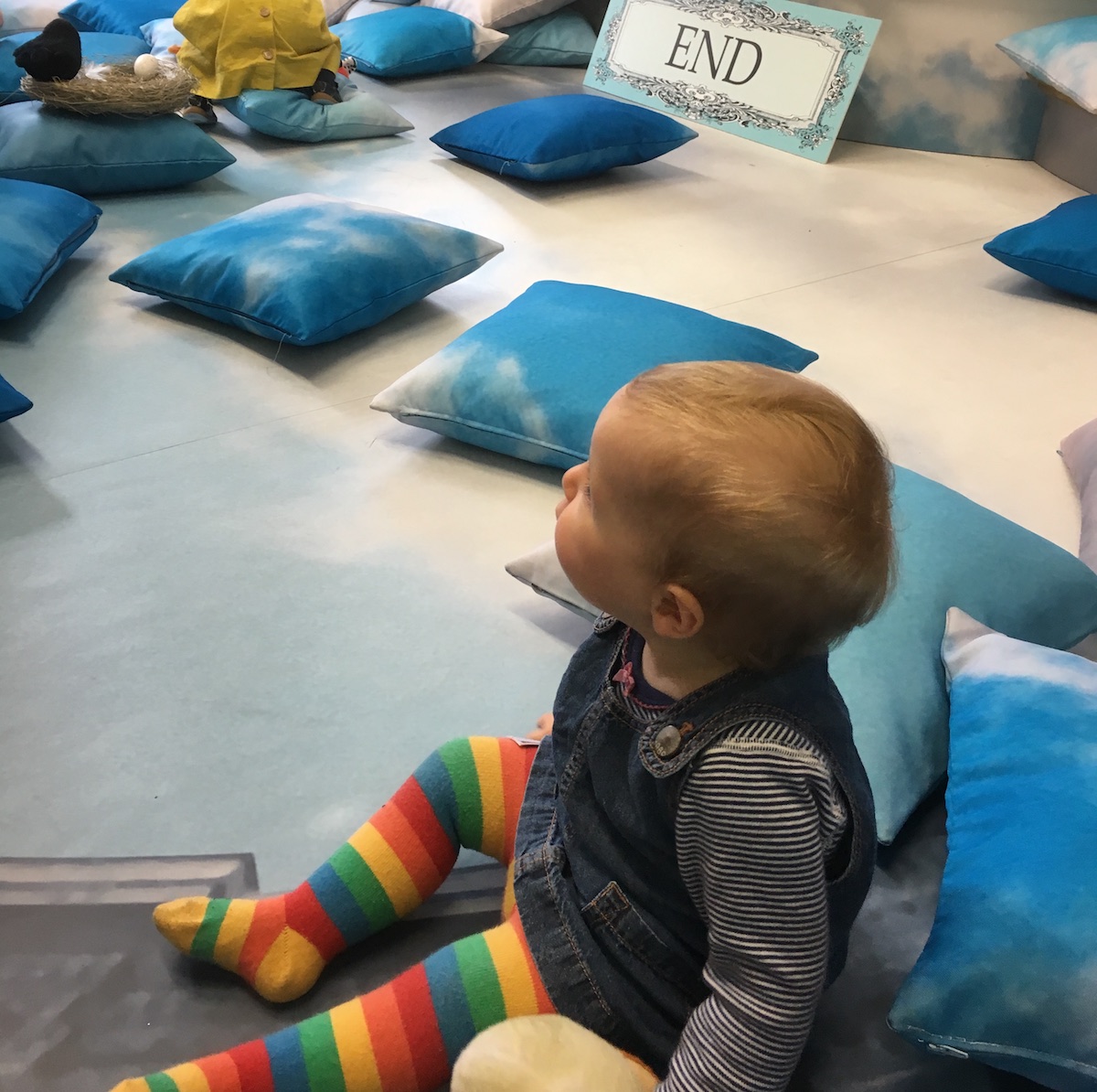
Shows for babies and toddlers at the Fringe are still very much in the minority compared to shows for older children, but it’s a genre that’s growing. They’re spread around the hundreds of different venues so the best way to find them is to search by category at tickets.edfringe.com and filter by age suitability. A lot of companies or artists making work for children hedge their bets by putting a lower age limit than is really reflective of the show, so you’ll need to read the marketing blurb and use your judgment when it comes to picking what to see.
The great news for theatre, comedy, cabaret and dance fans is that babes-in-arms (usually up to the age of 2, but it varies) are welcome at a massive number of shows at the Fringe. There’s unfortunately no way of filtering shows via their babes-in-arms policy on the Edfringe ticketing site; you have to click through to the individual show listing to find out whether infants are allowed and if they need a ticket.
Fringe venues aren’t usually accessible with pushchairs, and there’s rarely anywhere to park them, so take your little one in a sling if you can.
The Royal Mile is a great place to get a taste of the madness of the Fringe, though if you’re there with a pushchair or toddler on foot it might be best to go in the morning before the crowds descend. Catch see street performers at work, see snippets of shows at various pop-up stages and maybe even receive free tickets for later that day from performers desperate for an audience.
Two of the biggest venue companies, Underbelly and Assembly, have huge astroturfed areas in George Square Gardens that are good spots to let toddlers roam as you grab a drink or snack. They get very busy as the afternoon wears on. Underbelly’s Circus Hub on the Meadows offers something similar on a smaller scale, though there’s no shade there so it’s not ideal in the middle of the day.
Along with hosting lots of children’s shows, the Kidszone at the Pleasance Courtyard runs arts and crafts activities suitable for children up to the age of 10. There’s a little puppet theatre there too and ad hoc storytelling sessions.
There are lots of events for toddlers at the Edinburgh Book Festival, meanwhile, including readings of new books by your favourite picture book authors, craft activities and music sessions. Unlike the Fringe, the Book Festival takes place at one pop-up site, making it much easier to navigate with small children in tow. It’s also pushchair accessible.

Away from the festivals, you’d be crazy not to check out the National Museum of Scotland. There’s a fantastic children’s gallery where babies and toddlers can roam around, dress up, curl up for a story and play with a range of toys and musical instruments. There’s lots to do for kids elsewhere in the museum too, from laughing at taxidermy animals (a favourite activity of the baby girl’s) to playing in a sandpit. Entry is free.
Dynamic Earth, Edinburgh’s natural history museum, is also well set up for visiting with little ones, including a soft play area (it can get a bit raucous in there during the school holidays, so is better for toddlers than babies), plenty of high chairs and a microwave for heating up baby food and milk in the enormous café.
The Royal Commonwealth Pool has a shallow training pool and a brilliant soft play area that’s open until 6pm every day. It’s got a dedicated under-2s area so your little one doesn’t have to battle it out against children double her size.
Edinburgh Zoo is home to the UK’s only giant pandas, as well as all the other excellent animals you’d expect from a world-class zoo.
The Meadows, Edinburgh’s sprawling city centre park, has good playgrounds in the middle and at its far western and easternmost points. On the other side of town, the Royal Botanic Garden has free admission and runs family activities and trails. It’s also a venue for Fringe events for young children.
Please add your suggestions to add to this list in the comments below!
Childcare
You can take your little one to a lot of shows at the festivals, but not all of them, and there are some venues that don’t allow under-18s in at all. If you’re travelling as a couple or with other family members you can simply tag team babysitting and seeing shows – the nature of the festivals means that there are always lots of people seeing shows by themselves, so you won’t feel like a loner.
If that’s not an option, Edinburgh-based childcare agency Super Mums can provide festival nannies and babysitters to come to your flat or hotel, or to take your little one out and about. They can even stay the night if you need them to. It’s a good idea to book in advance but they can usually help out last-minute too.
Getting there
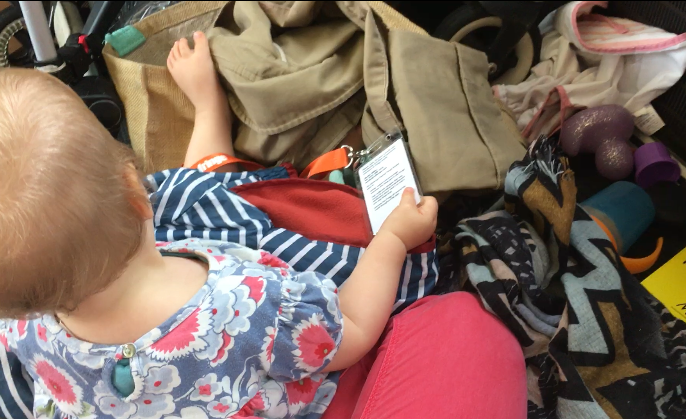
You can fly to Edinburgh Airport from all over the UK and Europe and a handful of destinations in the Middle East, Asia and the Americas. It takes about 30 minutes to get to the city centre by car (there are plenty of car hire companies to choose from), taxi, Airlink bus or tram. Read my posts on booking plane tickets, flying, airport transfers and getting through airports with babies and toddlers for tips.
Edinburgh’s main railway station, Waverly, is located in the heart of the city centre. It has several taxi ranks and is served by a large number of bus routes. My post on long train journeys with babies and toddlers might come in handy when it comes to planning here.
Getting about
Parking in the centre of Edinburgh is a nightmare so far better to leave your car at home and use the city’s excellent public transport system instead. Buses have space for a couple of unfolded pushchairs, though wheelchair users take priority. You need to pay the exact fare; drivers won’t give change and don’t look kindly on being asked to do so.
Far more convenient is the m-tickets smart phone app, which lets you buy a variety of tickets in advance to validate as you board. Tickets for Edinburgh’s trams can be bought on the app or at the ticket machines at tram stops. You’ll find more general tips on public transport with a pushchair elsewhere on the blog.
Edinburgh is well supplied with reasonably priced black cabs which are large enough to fit an unfolded pushchair. As elsewhere in the UK, you don’t need a child car seat for journeys in private hire vehicles.
Edinburgh is pretty compact so walking is often the fastest way to get around. The New Town is mostly very easy to navigate with a pushchair, with wide pavements and plenty of pedestrian crossings. The Old Town is a different story: it’s very hilly, pavements are narrow and lots of the streets are cobbled. It also gets very busy in August so leave plenty of time to get wherever you’re going.
Accommodation
A huge proportion of Edinburgh festival lets are flats in tenement buildings with winding stone staircases and no lifts. There’s sometimes space to lock a pushchair in the hallway at the bottom of the stairwell in these buildings but you can’t depend on that, so unless you like the idea of lugging a pushchair up and down stairs every time you go out, make sure to rent a ground-floor flat.
For information on what other questions to ask before booking self-catering accommodation, please see my post on the subject.
Eating out

As many of Edinburgh’s restaurants and cafes occupy small or architecturally idiosyncratic premises, often up or down stairs from the street, it’s easier all round if you’re unencumbered by a pushchair. Some places have high chairs, but not enough to rely on, so bring your own; the Totseat is very light and packs down small enough to pop in a handbag. You’ll find general tips on eating out with babies and toddlers elsewhere on this blog.
Essentials
There are small supermarkets all over central Edinburgh and a number of large ones a short distance by bus or car. The city is also well equipped with pharmacies.
Emergencies
The phone number for emergency services is 999 and there’s an accident and emergency department at the centrally located Royal Hospital for Sick Children. The one time we had cause to use it the baby girl was seen very quickly and the staff were excellent. Adults and children aged 13 and up should use the accident and emergency departments at the Royal Infirmary in the south of the city. Treatment is free at both hospitals on the NHS.


